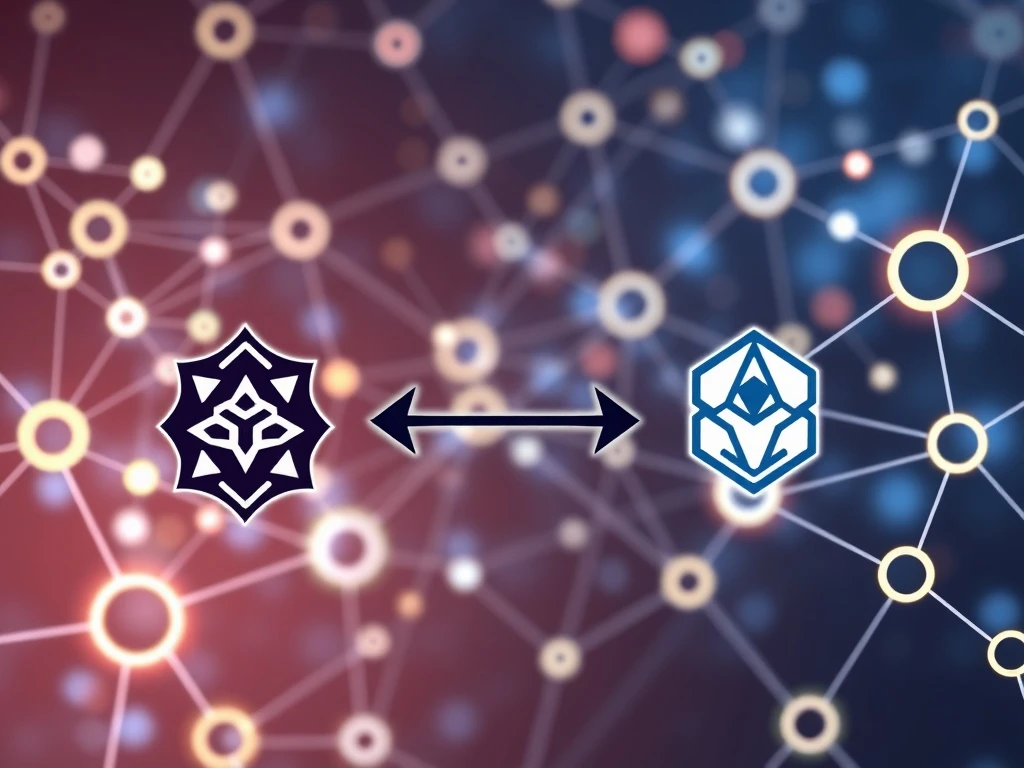Celestia TIA: Strategic Token Distribution Reshapes Altcoin Investment Landscape

In the fast-paced world of digital assets, major moves often signal significant shifts. A recent announcement involving the Celestia Foundation and a substantial acquisition of Celestia TIA tokens is making waves, setting a new precedent for how large-scale token holdings are managed and distributed in the cryptocurrency market. This strategic maneuver is poised to impact the broader altcoin investment landscape, offering a glimpse into evolving institutional strategies.
Understanding the Pivotal Celestia TIA Acquisition
The cryptocurrency community is buzzing about the Celestia Foundation’s recent agreement to acquire 43,451,616.09 Celestia TIA tokens. This significant transaction, valued at $62.5 million, involves a direct purchase from Polychain Capital, a prominent blockchain investment firm. Announced on August 16, the transfer of these tokens is not a one-time event but will occur over a three-month period, concluding on November 14. The primary goal behind this phased acquisition is to distribute these coins to new investors in a structured, market-neutral manner, aiming to prevent any sudden market shocks.
Polychain Capital’s Role and Strategic Unstaking
Polychain Capital, an early and significant investor in the Celestia project, had previously injected $20 million into the ecosystem. To facilitate this $62.5 million agreement, Polychain Capital will unstake its entire TIA holdings. This move highlights a unique aspect of institutional engagement in the crypto space, where early investors can strategically offload large positions without necessarily disrupting market equilibrium. The Celestia Foundation has stressed that this phased unlocking schedule is carefully designed to minimize financial strain on the market and avoid negatively impacting the token’s price dynamics. This collaboration between a foundation and a major investment firm underscores a maturing approach to liquidity management in the digital asset sector.
The Strategic Approach to Token Distribution
The Celestia Foundation’s resale strategy exemplifies sophisticated institutional tactics within the altcoin space. Large-scale token purchases followed by structured Token Distribution are becoming more common. By acting as an intermediary between early investors like Polychain and new buyers, the foundation seeks to strike a delicate balance between ensuring adequate supply liquidity and maintaining price stability. This method draws parallels with traditional market-making practices but introduces unique complexities inherent in crypto markets, where factors like supply scarcity and speculative demand often lead to high volatility. The foundation’s transparent and staggered approach aims to mitigate these risks, fostering a more predictable environment for new investors to enter the TIA ecosystem.
Evolving Trends in Altcoin Investment
This transaction reflects growing institutional confidence in altcoins as strategic assets, particularly for projects demonstrating clear utility or technical innovation. The Celestia deal, while focused on TIA, aligns with broader trends in institutional crypto adoption. For example, DeFi-focused firms have recently announced multi-million-dollar investments in Solana-based projects, signaling a notable shift towards altcoins with robust use cases. Such corporate activity could play a vital role in stabilizing altcoin markets by attracting long-term capital, viewing these assets as potential hedges against macroeconomic uncertainty. Analysts note that the timing of the Celestia resale plan, coinciding with heightened interest in altcoins and predictive tools highlighting projects like XRP and Cardano, suggests a strategic window for capitalizing on favorable market conditions for Altcoin Investment.
Navigating Crypto Market Dynamics and Regulatory Scrutiny
While structured resale mechanisms can enhance liquidity and foster long-term adoption, critics caution that such large transactions could amplify market manipulation risks, especially for projects with limited circulating supplies. However, proponents argue that transparency, as seen in the Celestia case with its clear timeline and compliance focus, can counteract these concerns. The foundation’s commitment to regulated resale channels aims to align with evolving financial regulations, contrasting with more opaque strategies that have historically caused sharp price corrections in some altcoin markets. The ongoing evolution of Crypto Market Dynamics means that regulatory considerations are paramount. As corporate participation in crypto grows, regulators are intensifying oversight of transparency and investor protection. The Celestia Foundation’s emphasis on compliance through regulated platforms indicates an effort to preempt scrutiny, though ongoing discussions around full disclosure remain pertinent for watchdogs.
Conclusion
The Celestia Foundation’s acquisition and planned distribution of TIA tokens represent a pivotal moment for institutional engagement in altcoin markets. By effectively acting as both an acquirer and a distributor, the foundation is actively reshaping market dynamics, all while navigating the sector’s inherent volatility and regulatory landscape. If successful, this innovative model could establish a significant precedent for other projects aiming to balance investor confidence with efficient liquidity management, paving the way for more mature and stable growth in the broader crypto ecosystem.
Frequently Asked Questions (FAQs)
Q1: What is the Celestia Foundation’s recent major announcement?
The Celestia Foundation announced a $62.5 million agreement to acquire 43,451,616.09 TIA tokens from Polychain Capital. This acquisition aims to distribute the tokens to new investors in a staggered, market-neutral manner.
Q2: Why is Polychain Capital selling its TIA holdings?
Polychain Capital, an early investor in Celestia, is unstaking its entire TIA holdings to complete the $62.5 million sale to the Celestia Foundation. This allows the foundation to manage the distribution to new investors.
Q3: How will the Celestia TIA tokens be distributed to new investors?
The tokens will be transferred over a three-month period, ending November 14. This phased unlocking schedule is designed to be market-neutral, minimizing financial strain and avoiding disruption to TIA’s market dynamics by preventing a sudden influx of tokens.
Q4: What does this transaction signify for altcoin investment?
This deal highlights growing institutional confidence in altcoins as strategic assets, especially for projects with clear utility. It suggests a trend towards structured distribution methods that aim to balance supply liquidity with price stability, attracting long-term capital to the altcoin market.
Q5: Are there any regulatory concerns regarding this type of transaction?
While structured resales can enhance liquidity, critics note potential market manipulation risks, particularly for tokens with limited circulating supplies. However, the Celestia Foundation has emphasized transparency and compliance through regulated resale channels, aiming to align with evolving financial regulations and preempt scrutiny.









